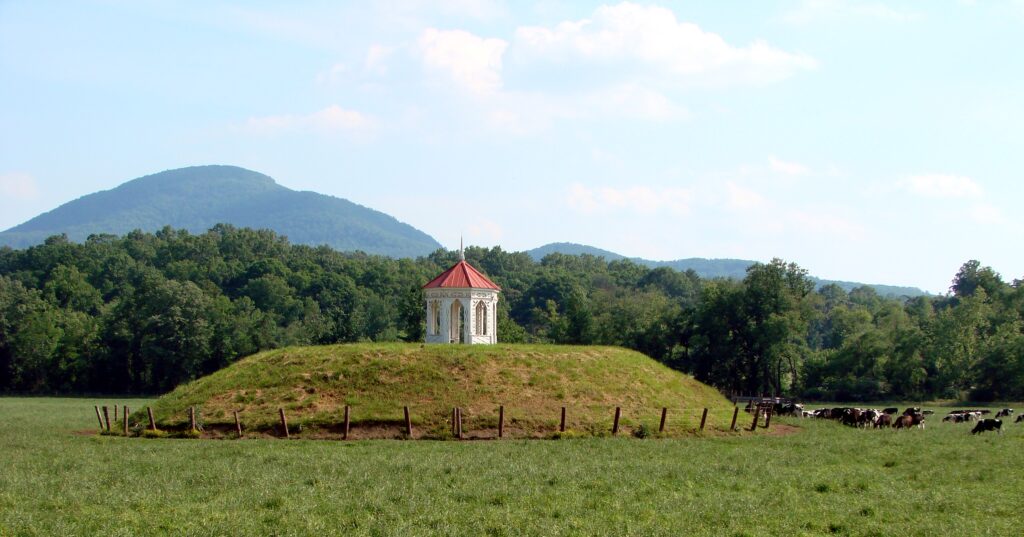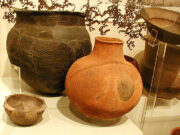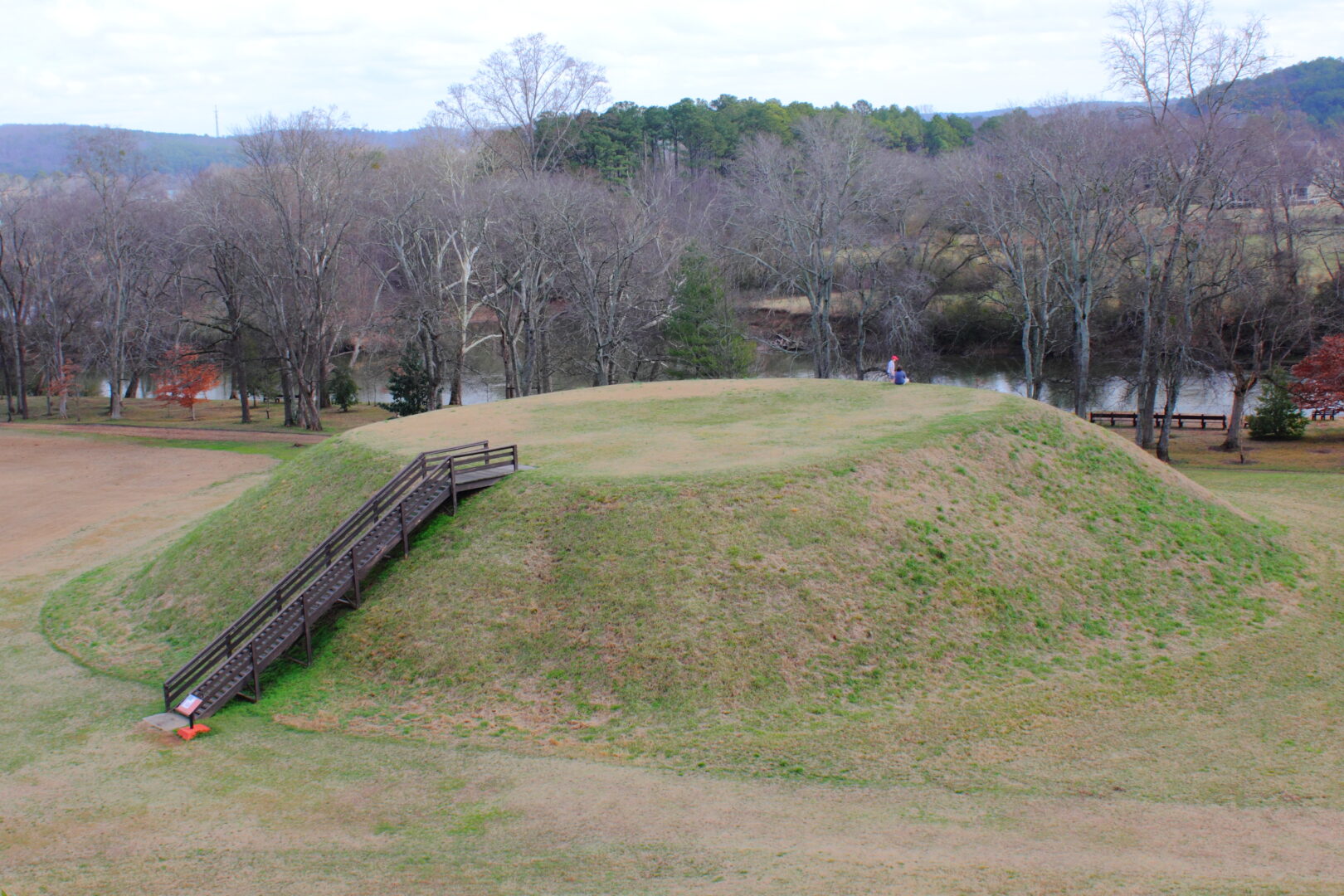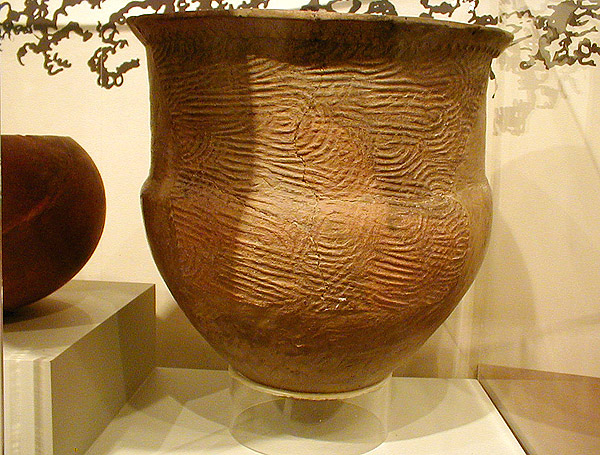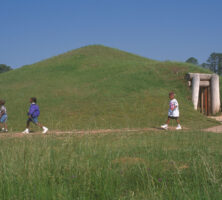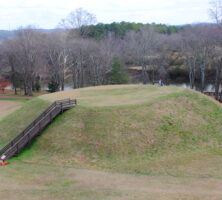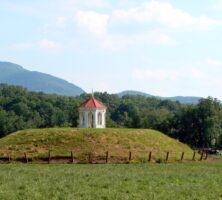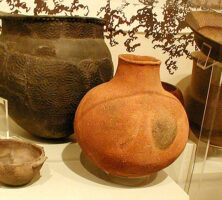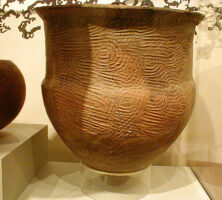Archaeologists in Georgia have named the period of Georgia prehistory from about A.D. 1350 to 1600 the Lamar Period.
This is one of the best-known archaeological periods in Georgia, and it was during the latter part of this period that the Spanish explorer Hernando de Soto made his famous expedition through the state. The Lamar Period is named for the Lamar mound site at Macon, situated on a detached part of the Ocmulgee Mounds National Historical Park. The Lamar site was extensively excavated in the 1930s, and only limited work has been conducted there since that time. The two-mound site was undoubtedly visited by de Soto and his army of 600 Spanish soldiers in the spring of 1540.

The Lamar Period societies in Georgia were Mississippian agricultural chiefdoms, led by venerated chiefs who lived on the summits of the flat-topped mounds in the centers of their villages. These farmers planted large fields of corn, beans, and squash in the rich, moist flood plains of the major Georgia rivers. Warfare was common between the twenty or so chiefdoms scattered over the state. Built during the Lamar Period were many of the largest and best-known mound sites in Georgia: Lamar, Etowah, Scull Shoals, Nacoochee, and Rood’s Landing, among others. Frequently these local chiefdoms were under the control of other, more powerful societies, forming what archaeologists call paramount chiefdoms or provinces. The total population of Georgia at the time of de Soto’s first visit was probably well over 100,000 people. The written accounts of his trip list the names for many of these Lamar Period chiefdoms, including Capachequi, Toa, Ichisi, Ocute, and Coosa.
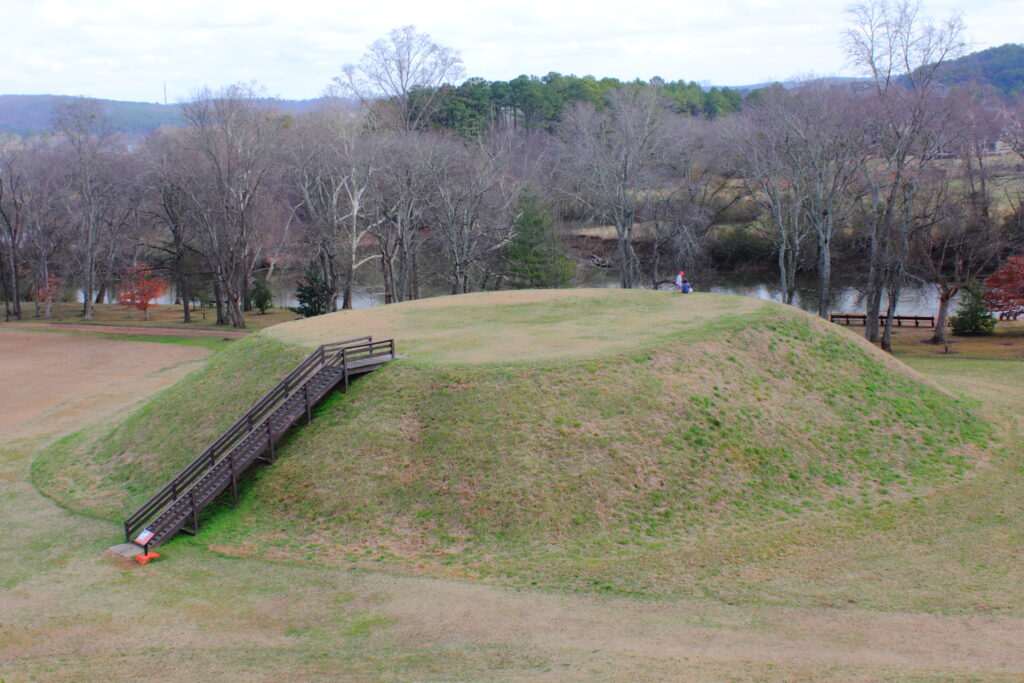
The women of the Lamar chiefdoms made pottery of a distinctive style, which makes archaeological sites of the period easy to identify. Lamar pottery was made throughout Georgia and well into the adjacent states. The similarities among pottery found over such a huge area imply that people frequently moved their families from the territory of one chiefdom to another.
The more that archaeologists study the thousands of known archaeological sites of the Lamar Period, the more complicated and interesting this period becomes. Archaeologists now know, for example, that the frequency of warfare differed markedly from one region to another and that most of the mound centers were occasionally abandoned for periods of up to seventy-five years before being reoccupied. The percentage of people in a chiefdom who lived at or near the mound site, as opposed to those who lived in individual farmsteads miles away, varied considerably across the state. Since the mid-1970s archaeologists have carefully reconstructed the patterns of growth and decline of many of the Lamar Period societies in Georgia.
